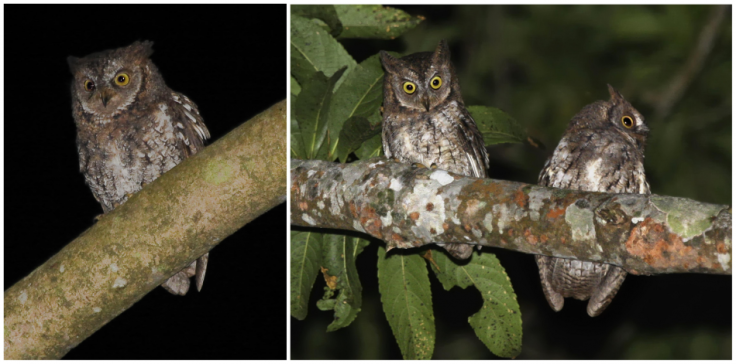Researchers Find New Owl Species in Indonesia, by Accident
Researchers have discovered a new species owl on the Indonesian island of Lombok. The discovery is believed to be a completely accidental one. The team was meant to work on another nocturnal bird.
They recognised the new species as the Rinjani Scops Owl (Otusjolandae) that is common up to an elevation of 1350m and is found within the Gunung Rinjani National Park. The discovery, published in Plos One, states this is the first endemic bird species from Lombok.

The original research was meant to focus on the vocalisation of a local nightjar species. However, the researchers said they heard vocalisations of an unfamiliar owl species.
"While I was recording the nightjar, I heard a song that sounded like an owl, but unlike any I'd heard before in years of fieldwork in Indonesia," King said, "I recorded the owl and played the tape back to the owl and eventually, I got a good view of a pair."
Standard practice for identifying and distinguishing owls was based on plumage and morphology. However, in their article, the authors - George Sangster (Department of Vertebrate Zoology, Swedish Museum of Natural History), Ben F King (Ornithology Department, American Museum of Natural History), Philippe Verbelen (an independent researcher from Belgium) and Colin R Trainor (an independent researcher from Australia) - said: "Species limits in scops owls are poorly understood due to their complex pattern of individual and geographic variation... In the 1970s, it was discovered that vocalizations of scops owls may offer clues to their taxonomic status and affinities. [Joe T] Marshall subsequently proposed that species limits in scops owls and other small nightbirds are better inferred from vocalizations than from variation in morphology."
Sangster also cautioned other researchers, saying there was a strong possibility of more undiscovered species.
"I had never tape-recorded the scops owl there, as it looked like the Moluccan scops owl. I just assumed the earlier studies were correct in their assessment. However, its whistle sounded completely different to the croak like sound of Moluccan scops owl. Things got interesting. At that time, we did not think we discovered something new. We checked the taxonomic literature and realised that we were had interesting research on our hands," he added.
The confirmation of the new species included a DNA analysis and the entire research took a decade to complete.
© Copyright IBTimes 2025. All rights reserved.





















